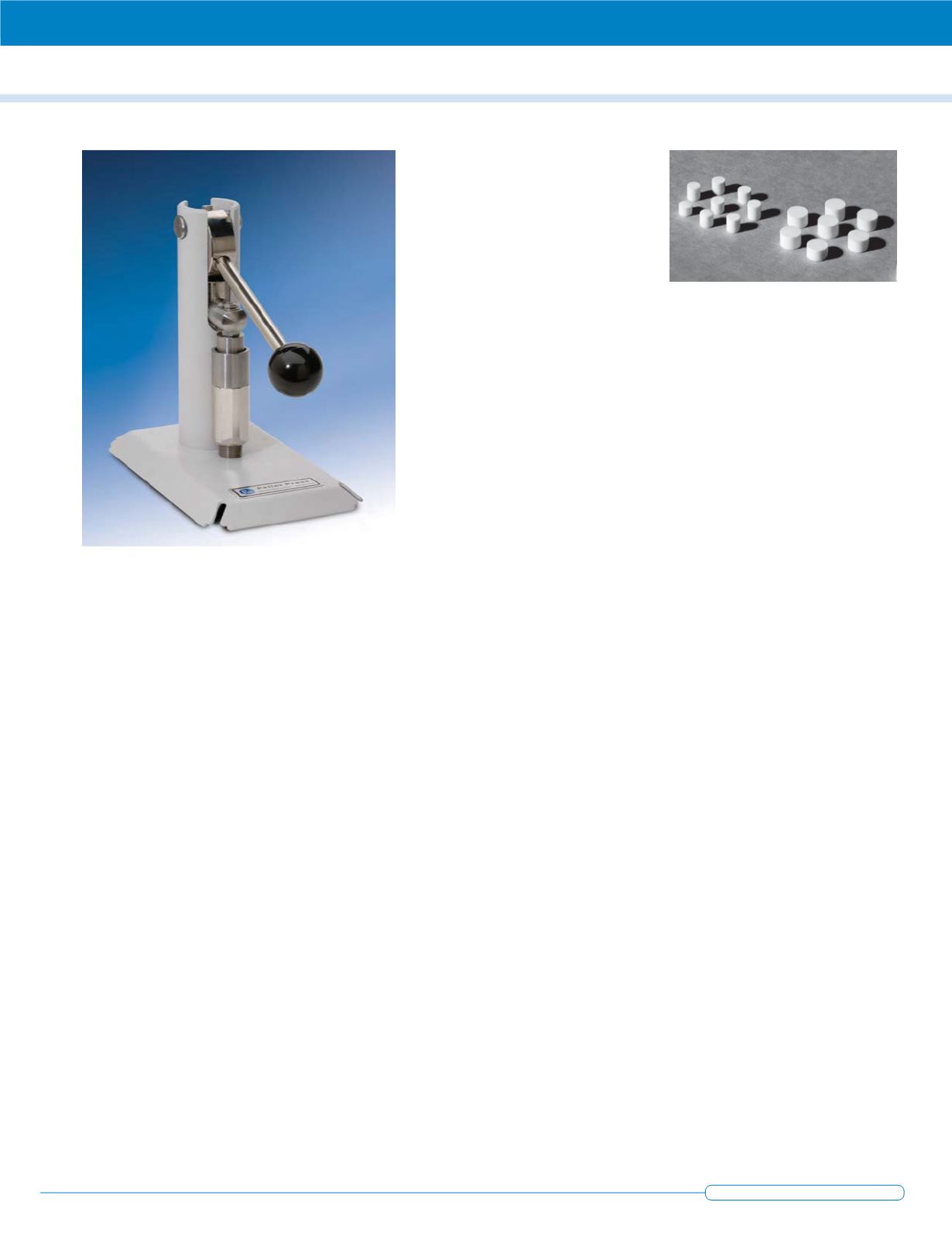
The Parr 2811 Pellet Press
provides a convenient means
for compressing powdered
materials into pellet or tablet
form without a heavy invest-
ment in expensive tablet-
making machinery. It is a
compact, hand-operated press
that can be used anywhere
in the laboratory, requiring
very little bench space and
no fixed mounting, producing
uniform pellets in a polished
stainless steel die and ejecting
them smoothly into a stainless
receiver without danger of con-
tamination.
For Bomb Calorimetry
Pellet making is a very
important step in bomb calo-
rimetry, particularly when
working with finely powdered
samples. Although some pow-
dered materials burn well in an
oxygen bomb, others, such as
benzoic acid, must be pellet-
ized for safe combustion and
best results. There are several
advantages to be gained by
burning samples in pellet form
instead of a loose powder.
Restricted burning rates.
Some materials have dan-
gerously high burning rates
if burned as a loose powder.
These rates can be restricted
to safe levels by compressing
the powder into a pellet or
briquette.
Complete combustion.
Loose powders exposed to
the turbulent gases produced
during a bomb combustion
may be blown out of the
sample cup and extinguished
by the cold bomb wall before
they have burned completely.
A pelletized sample will be held
in the combustion zone with a
much better chance for com-
plete combustion.
Ease of handling.
Pelletized samples are easy
to handle and weigh; they lie
flat in the combustion capsule
and ignite easily.
For Other Test Procedures
Pelletized samples are
equally important in other
investigative and test proce-
dures. Laboratories engaged
in pharmaceutical, biological,
nutrition and spectrographic
operations find frequent uses
for tablets and wafers of the
types that can be made in a
Parr press. Spectroscopists
find this device excellent for
preparing samples to be ana-
lyzed in an emission spectrom-
eter. Small diameter pellets
made in a Parr pellet press
can be imbedded in a hole
drilled in the sparking elec-
trode, assuring the operator
that his sample will always be
held in exactly the right posi-
tion for best results.
Six Pellet Sizes
The pellets produced in
the Parr press are cylindrical
in shape with flat ends. Their
height or thickness depends
upon the amount of mate-
rial compressed and the force
applied. Six different punch
and die sets are available for
making pellets in diameters
from 3 mm up to a maximum
of 1/2 inch. All of these punch
and die sets operate in the
same basic press. The dies
are not fastened down. They
automatically align with the
punch and may be slipped out
from under the punch for quick
reloading.
Pressure and Density
Adjustments
The compressive force in
this press is developed by hand
pressure on a lever attached
to a large steel cam. This sys-
tem is designed to provide a
steadily increasing mechani-
cal advantage up to a ratio of
approximately 50 to 1 at the
end of the stroke. Thus, a force
of 20 pounds applied to the
lever develops approximately
1000 pounds on the punch,
which is adequate to produce
firm pellets from most pow-
dered materials, usually with-
out adding a binder.
The anvil which supports the
die in the Parr press is attached
to a heavy screw post so that
it can be raised or lowered.
Rotating the anvil to raise or
2811 Pellet Press
P a r r I n s t r u m e n t C o m p a n y
w w w . p a r r i n s t . c o m


